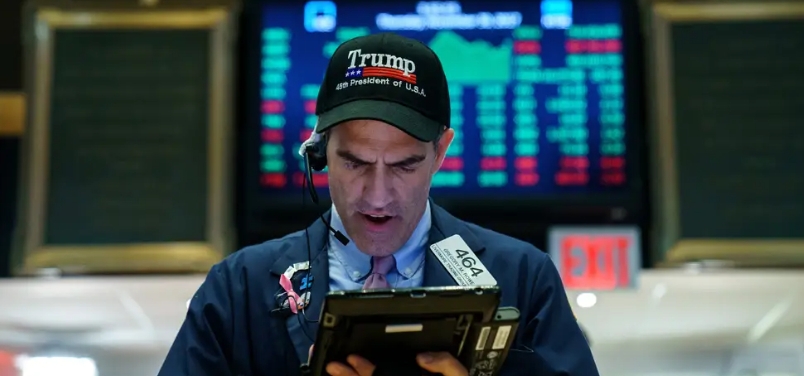Navigating the Market’s Wild Ride: A Look Back at H1 2025 and What Lies Ahead
The first half of 2025 was a financial thriller, with markets swinging like a fresh tennis ball slammed onto a hard court, only to bounce back with ferocious spin. Chaos erupted early as tariff fears

The first half of 2025 was a financial thriller, with markets swinging like a fresh tennis ball slammed onto a hard court, only to bounce back with ferocious spin. Chaos erupted early as tariff fears gripped investors, sending stocks into a tailspin. By April, the S&P 500 had shed 17.8% year-to-date, while the Nasdaq plummeted 23.4%. The New York Stock Exchange composite nosedived 13% in just five trading sessions, and small caps, tracked by the S&P Small Cap 600, took an even harder hit. Bearish forecasts flooded the airwaves, with pundits warning of a prolonged downturn.
Yet, the script flipped mid-year. A ceasefire between Israel and Iran eased geopolitical jitters, and a framework trade deal between the US and China sparked a rally. Investors cheered as Trump paused his sweeping tariff agenda, striking preliminary agreements with key trading partners. By June, stocks were back in "meltup mode," with the S&P 500 and Nasdaq soaring to record highs. The S&P 500 closed at 6,173, up 5% for the year, while the Nasdaq hit 20,273, fueled by a 4.2% weekly surge.
Economic data painted a mixed but resilient picture. Retail sales stumbled, reflecting tariff uncertainties, but GDP growth held firm. The Atlanta Fed’s GDPNow estimate for Q2 clocked in at 2.9%, down from 3.4% in June, signaling a robust—if slightly cooling—economy. "The upward climb in stocks is partly due to the continued strength of the US economy," Ed Yardeni, president of Yardeni Research, told CNBC. "You put it all together, and it’s a pretty solid stock market."
Expectations: Cautious Optimism for H2
As the calendar turns to the second half of 2025, Wall Street’s crystal ball glows with cautious optimism. Ed Yardeni predicts the S&P 500 will climb to 6,500 by year-end—a 5% gain from current levels—potentially kicking off a 1990s-style bull run that could see the index hit 10,000 by 2030. UBS Global Wealth Management offers a more tempered view, pegging the index at 6,200 by December and 6,500 by June 2026, driven by earnings growth of 6% in 2025 and 7.5% in 2026. "The market is already looking ahead to 2026, when tariff frictions may ease," Yardeni noted, pointing to a brighter horizon for corporate profits.
The optimism rests on two pillars: economic resilience and trade progress. Matt Stucky of Northwestern Mutual Wealth Management sees a hard landing fading from view, especially if trade talks hold steady. "It’s not a situation where there’s a significant need to go to a lower valuation for stocks," he told Investor’s Business Daily. Analysts expect S&P 500 earnings to rise 7.1% this year, bolstered by Trump’s $4.2 trillion tax-and-spending bill, which could juice corporate bottom lines. Meanwhile, the bond market’s calm— with the Bloomberg U.S. Aggregate Bond Index up 2.5% year-to-date—offers a stable backdrop for equities.
Yet, the rally’s not a sure bet. The Organization for Economic Cooperation and Development (OECD) warns of slowing global growth, forecasting just 2.9% for 2025, down from 3.3% in 2024. Homebuilding stocks have cratered amid volatile interest rates, and inflation, though tamed, hasn’t convinced the Federal Reserve to slash rates yet. Still, if trade deals solidify and earnings hold up, the ball could keep bouncing higher.
Risks: Storm Clouds Gathering
Beneath the rosy forecasts, storm clouds loom. Five risks threaten to derail the rally, and savvy investors are bracing for turbulence.
Trade Tensions: The July 9 deadline for trade pacts is a ticking clock. While the UK has inked a deal and the US nears agreements with Mexico and Vietnam, talks with Canada stalled over a digital services tax. Trump’s tariff threats linger, and a misstep could jolt markets. "There’s going to be a lot of uncertainty, a lot of volatility," warns Anthi Tsouvali of UBS Global Wealth Management.
Earnings Uncertainty: Corporate earnings face a stress test. Analysts predict a 7.1% rise for S&P 500 firms, but a Business Roundtable survey shows CEOs growing wary of hiring and spending. "Growth expectations have got to come down," says Louise Dudley of Federated Hermes, hinting at a potential ceiling on gains.
Geopolitical Wildcards: US-China tensions simmer despite the trade framework, with rare earth access and tech transfers unresolved. Iran’s nuclear ambitions add another layer of unease. "We continue to see geopolitical risk as structurally elevated," cautions Francisco Simón of Santander Asset Management.
US Debt Woes: America’s fiscal health is fraying. The US lost its top credit rating in May, and Trump’s tax plan could pile trillions onto the $32 trillion debt. "The problem is not going away," says Neil Robson of Columbia Threadneedle Investments. A bond market revolt could spike yields, squeezing stocks.
Stretched Valuations: The S&P 500 trades at 22 times forward earnings, far above its 10-year average of 18.6. "Valuations may have further to adjust if economic conditions deteriorate," warns David Chao of Invesco Asset Management. A pullback could be swift if growth falters.
In the end, 2025’s first half was a wild ride—from a tariff-induced plunge to a record-setting rebound. The second half promises growth, but only for those nimble enough to dodge the pitfalls. As the market teeters between meltup and meltdown, agility will be the name of the game.
Disclaimer: The views in this article are from the original Creator and do not represent the views or position of Hawk Insight. The content of the article is for reference, communication and learning only, and does not constitute investment advice. If it involves copyright issues, please contact us for deletion.